Entry Database : PDB / ID : 2l85Title Solution NMR structures of CBP bromodomain with small molecule of HBS CREB-binding protein Keywords / Function / homology Function Domain/homology Component
/ / / / / / / / / / / / / / / / / / / / / / / / / / / / / / / / / / / / / / / / / / / / / / / / / / / / / / / / / / / / / / / / / / / / / / / / / / / / / / / / / / / / / / / / / / / / / / / / / / / / / / / / / / / / / / / / / / / / / / / / / / / / / / / / / / / / / / / / / / / / / / / / / / / / / / / / / / / / / Biological species Homo sapiens (human)Method / Model details lowest energy, model 1 Authors Borah, J.C. / Mujtaba, S. / Karakikes, I. / Zeng, L. / Muller, M. / Patel, J. / Moshkina, N. / Morohashi, K. / Zhang, W. / Gerona-Navarro, G. ...Borah, J.C. / Mujtaba, S. / Karakikes, I. / Zeng, L. / Muller, M. / Patel, J. / Moshkina, N. / Morohashi, K. / Zhang, W. / Gerona-Navarro, G. / Hajjar, R.J. / Zhou, M. Journal : Chem.Biol. / Year : 2011Title : A Small Molecule Binding to the Coactivator CREB-Binding Protein Blocks Apoptosis in Cardiomyocytes.Authors : Borah, J.C. / Mujtaba, S. / Karakikes, I. / Zeng, L. / Muller, M. / Patel, J. / Moshkina, N. / Morohashi, K. / Zhang, W. / Gerona-Navarro, G. / Hajjar, R.J. / Zhou, M.M. History Deposition Jan 4, 2011 Deposition site / Processing site Revision 1.0 Jan 19, 2011 Provider / Type Revision 1.1 Jul 13, 2011 Group Revision 1.2 May 1, 2024 Group / Database references / Derived calculationsCategory chem_comp_atom / chem_comp_bond ... chem_comp_atom / chem_comp_bond / database_2 / pdbx_nmr_spectrometer / struct_ref_seq_dif / struct_site Item _database_2.pdbx_DOI / _database_2.pdbx_database_accession ... _database_2.pdbx_DOI / _database_2.pdbx_database_accession / _pdbx_nmr_spectrometer.model / _struct_ref_seq_dif.details / _struct_site.pdbx_auth_asym_id / _struct_site.pdbx_auth_comp_id / _struct_site.pdbx_auth_seq_id
Show all Show less
 Yorodumi
Yorodumi Open data
Open data Basic information
Basic information Components
Components Keywords
Keywords Function and homology information
Function and homology information Homo sapiens (human)
Homo sapiens (human) Authors
Authors Citation
Citation Journal: Chem.Biol. / Year: 2011
Journal: Chem.Biol. / Year: 2011 Structure visualization
Structure visualization Molmil
Molmil Jmol/JSmol
Jmol/JSmol Downloads & links
Downloads & links Download
Download 2l85.cif.gz
2l85.cif.gz PDBx/mmCIF format
PDBx/mmCIF format pdb2l85.ent.gz
pdb2l85.ent.gz PDB format
PDB format 2l85.json.gz
2l85.json.gz PDBx/mmJSON format
PDBx/mmJSON format Other downloads
Other downloads 2l85_validation.pdf.gz
2l85_validation.pdf.gz wwPDB validaton report
wwPDB validaton report 2l85_full_validation.pdf.gz
2l85_full_validation.pdf.gz 2l85_validation.xml.gz
2l85_validation.xml.gz 2l85_validation.cif.gz
2l85_validation.cif.gz https://data.pdbj.org/pub/pdb/validation_reports/l8/2l85
https://data.pdbj.org/pub/pdb/validation_reports/l8/2l85 ftp://data.pdbj.org/pub/pdb/validation_reports/l8/2l85
ftp://data.pdbj.org/pub/pdb/validation_reports/l8/2l85 Links
Links Assembly
Assembly
 Components
Components Homo sapiens (human) / Gene: CREBBP, CBP / Production host:
Homo sapiens (human) / Gene: CREBBP, CBP / Production host: 
 Sample preparation
Sample preparation Processing
Processing Movie
Movie Controller
Controller





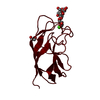

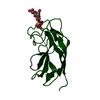





 PDBj
PDBj









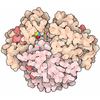
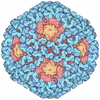




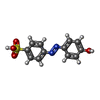

 NMRPipe
NMRPipe